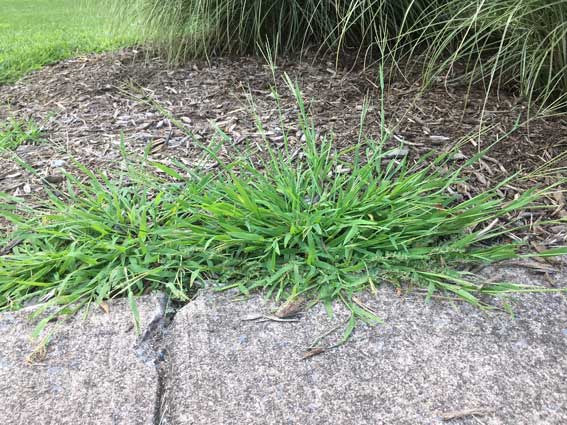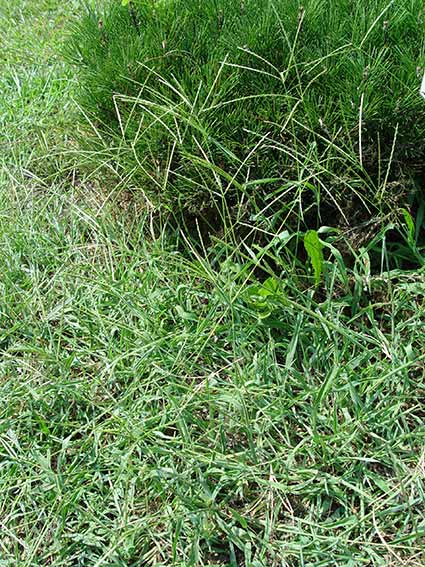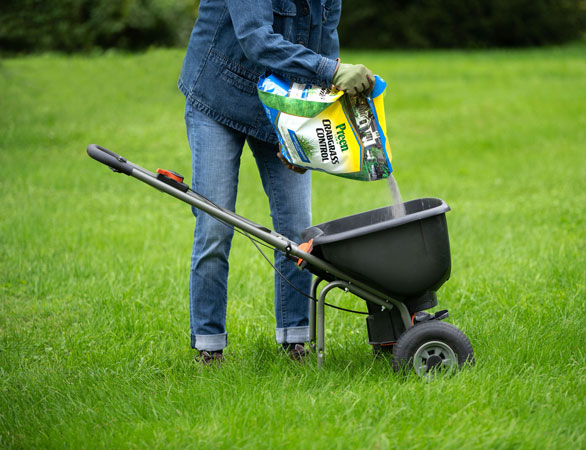How to Control Spring Weeds in the Lawn
If you see yellow in the lawn from dandelions, look for Preen Lawn Weed Control in the yellow bag.

Crabgrass quickly colonizes any sunny opening it can find, in garden beds as well as lawns. © George Weigel
The rainy growing season that much of the United States had in 2018 fueled one of the worst outbreaks in years of crabgrass, that grassy weed that plagues lawns nationwide. Regular rain not only sprouts a lot of crabgrass seeds – and other weeds, for that matter – but it’s also a boon to crabgrass growth. All of 2018’s robust crabgrass produced healthy amounts of seed by late summer, putting plenty of new seed in the ground for 2019 and beyond.
Crabgrass depends on good seed production since it’s an annual weed, meaning it dies at the end of each growing season and sprouts anew from seed each spring. In a good year like 2018, crabgrass can produce 100,000 to 150,000 seeds per plant. That’s a lot of crabgrass plants waiting to sprout. What’s more, crabgrass has the good survival skill to stay dormant for years. Even if you managed to kill or stop every last crabgrass plant one year, new crabgrass could still keep sprouting.

These crabgrass plants have gone to seed, opening the door to as many as 150,000 new seeds per plant. © George Weigel
With a lot of seed in the ground, one important variable is in place for a “crabgrassy” 2019. How bad this year’s outbreak turns out to be depends on two other variables. One is open space. Crabgrass is adept at finding and filling openings, which is why it’s mainly a problem in thin lawns and bare spots. The way to combat that is to maintain a thick, healthy lawn and to plant new grass seed in bare and thin areas to close those openings. The second factor crabgrass needs is moisture. Seeds germinate best in rainy springs, but they can keep sprouting through much of summer, so long as the rain keeps coming.
That’s what happened in 2018.
This prolific spreader is much easier to stop from seeding in the first place than it is to kill later after it’s up and thriving. Early spring – before crabgrass germinates – is when crabgrass preventers are most effective. Good cues are when buds on the earliest landscape plants start to open and when forsythia shrubs reach peak bloom.
Preen Lawn Crabgrass Control kills crabgrass seedlings in addition to preventing sprouting in the first place, allowing it to be applied slightly later than other products and giving up to four months of crabgrass control. It also controls chickweed, henbit, yellow foxtail, spurge, and many other weeds and can be used on both cool- and warm-season grasses, including bentgrass, fescues, Kentucky bluegrass, ryegrass, bermudagrass, St. Augustine grass and zoysia.
Preen One Lawncare also kills and prevents 250 lawn weeds – including crabgrass – and it fertilizes for eight weeks as well.

Provides up to 4 months of crabgrass control.